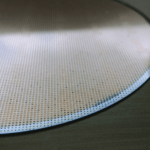An Australian wireless technology company may have set a new Wi-Fi transmission record of 1.8 miles while still maintaining enough bandwidth for a video call. Beyond the range, what’s impressive is that this demonstration was conducted in a real-world, interference-prone environment, and what that could mean for consumer products.
Wi-Fi HaLow technology overcomes the limitations of traditional Wi-Fi by operating in the globally unlicensed sub-GHz range (850-950 MHz) in narrow frequency bands (1, 2, 4 or 8 MHz). This allows the technology to penetrate obstacles and deliver unparalleled performance even in noisy environments crowded with multiple connected devices and cameras. But it is important to note that this technology is not compatible with regular Wi-Fi.
Ultra-long-range Wi-Fi devices are primarily designed for Internet of Things (IoT) scenarios where high data rates are not required. The Wi-Fi HaLow standard appears to be the ideal wireless solution for this type of application.
In addition to its long range and high resistance to interference, Wi-Fi HaLow also demonstrated significantly lower power consumption compared to high-speed wireless solutions such as Wi-Fi 7.
This extreme test demonstrates the versatility and potential of HaLow, especially with Morse Micro’s proprietary MM6108 Wi-Fi certified manufacturing silicon. For example, with products like Edge Camera that promise a range of up to 1.5 miles, users can confidently install their camera further from the router and monitor over wider distances.








